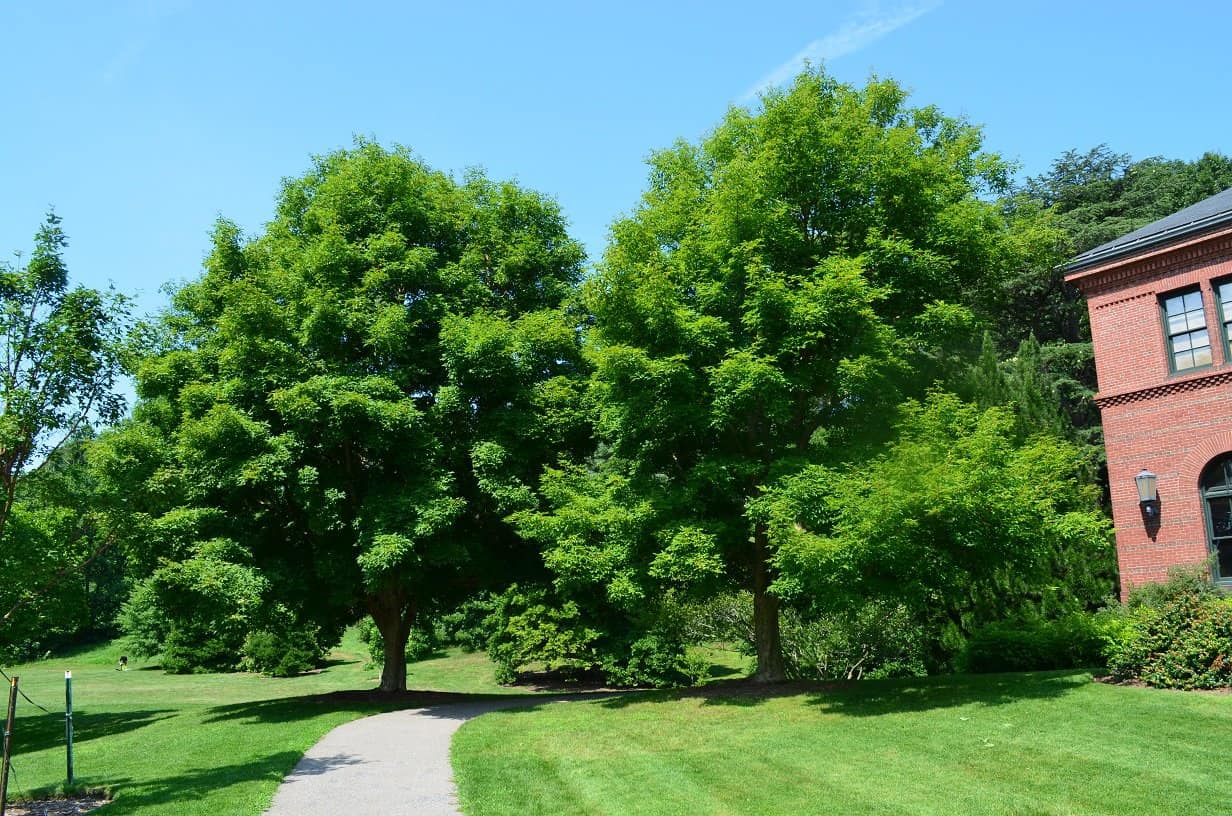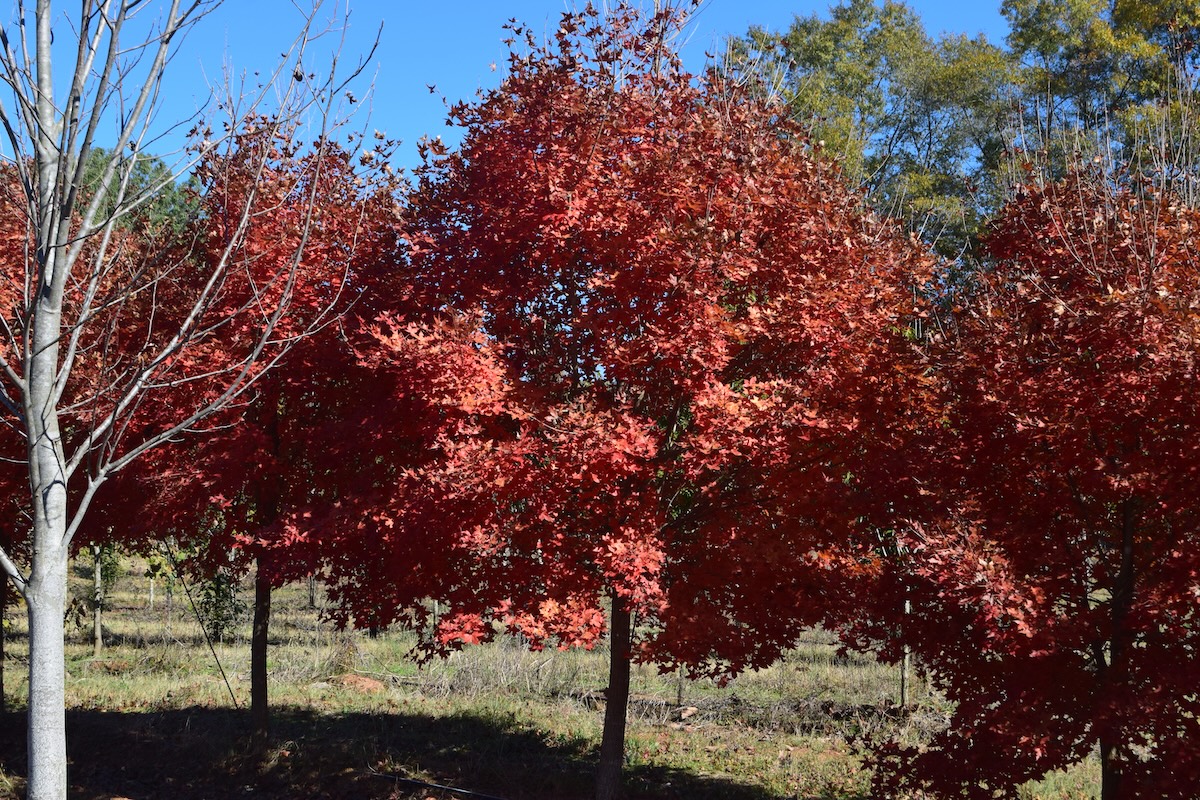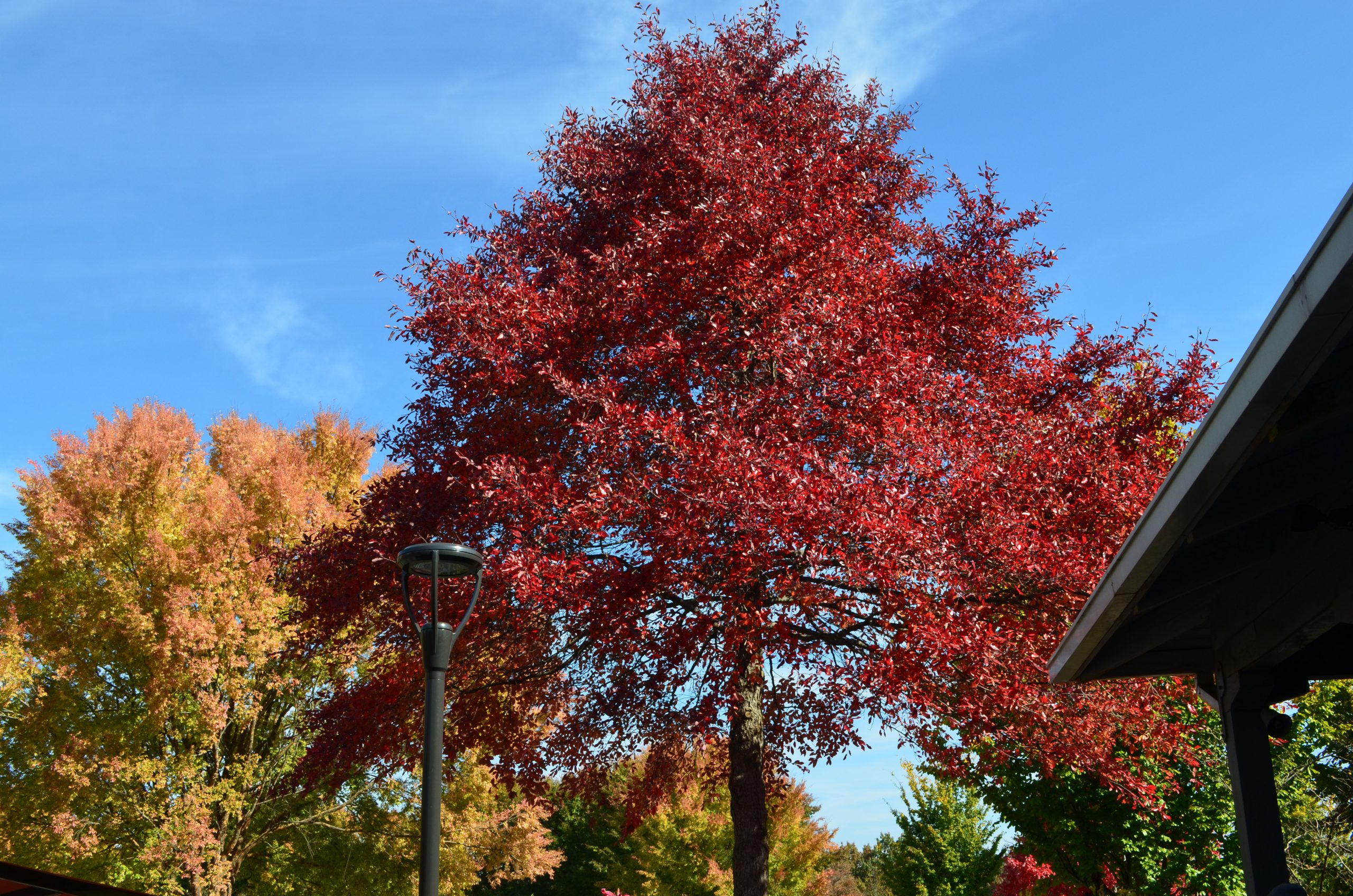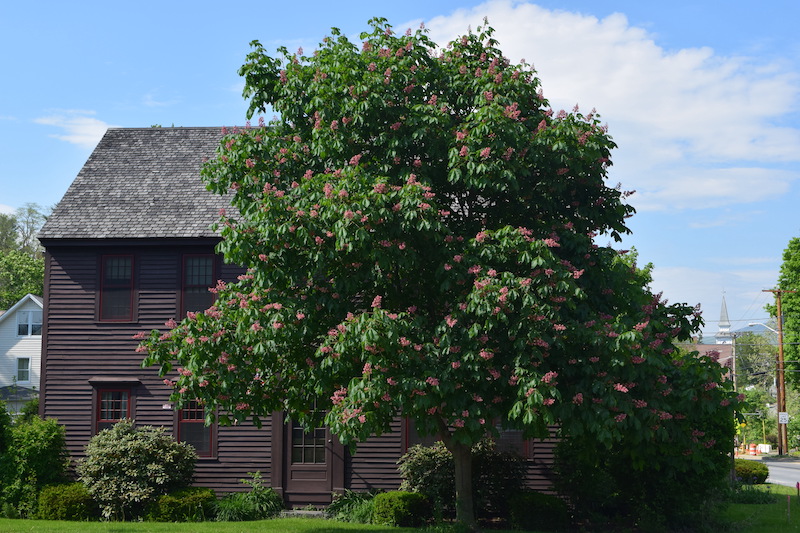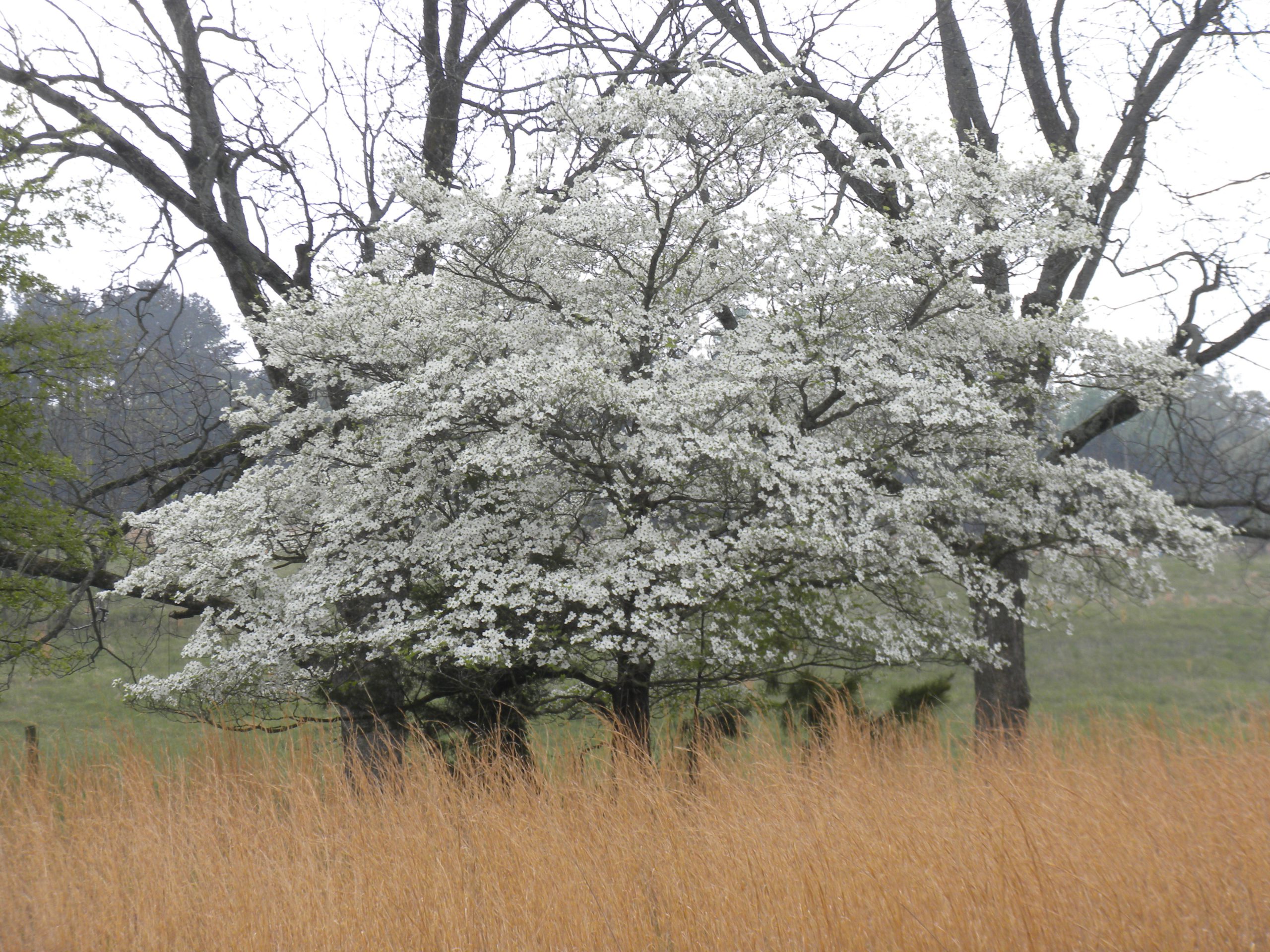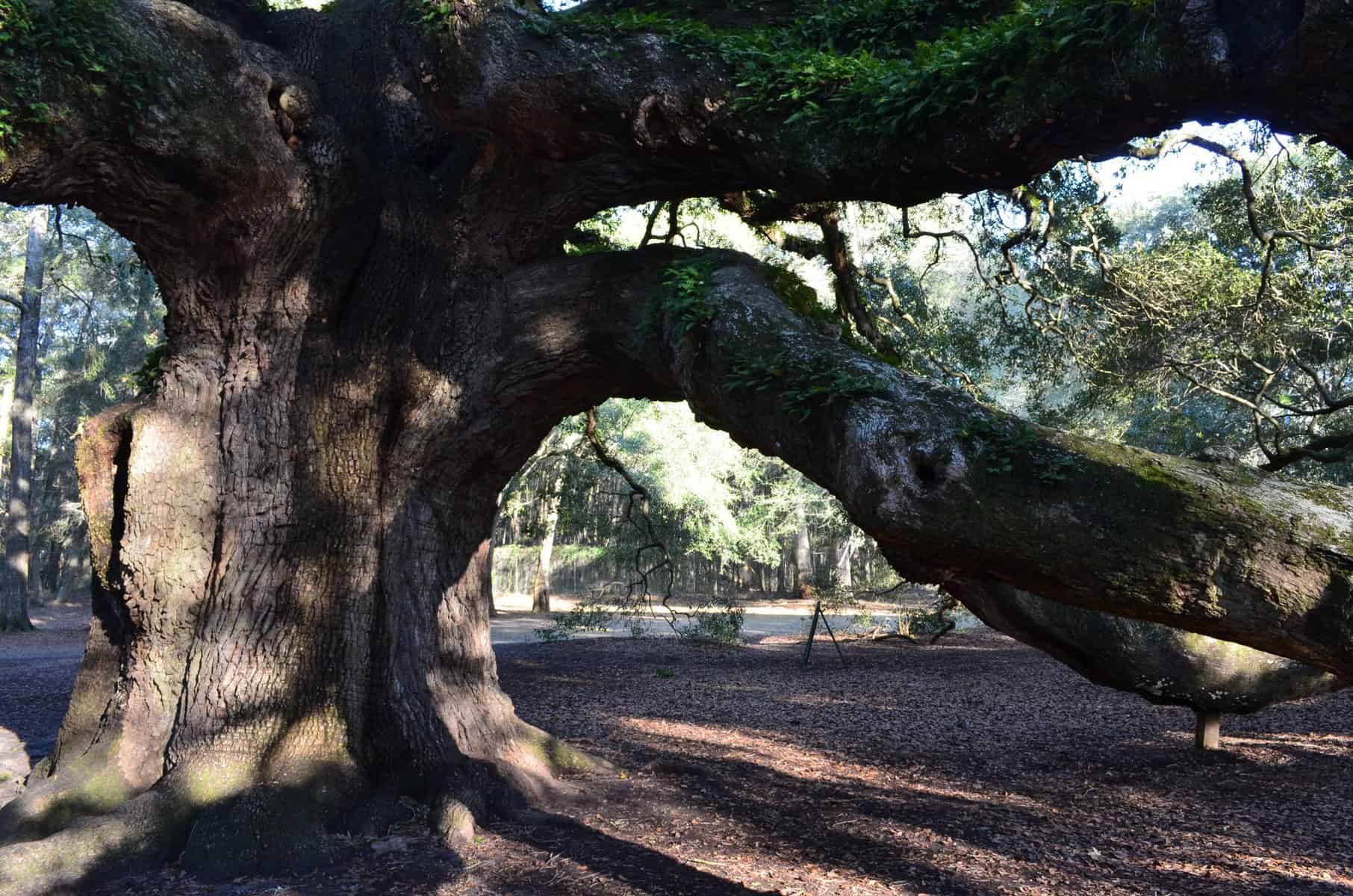From the arborists’ point of view, the tuliptree has more than its share of liabilities including excessively fast growth, limb breakage, drought-induced premature leaf abscission, and aphid/honeydew issues. Yet it is one of the most noble trees in the eastern North American deciduous forest.
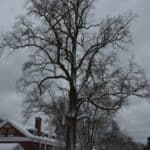
Winter habitat in Amherst
In Joyce Kilmer National Forest, the towering slender bole and narrow crown provide pause for reflection.
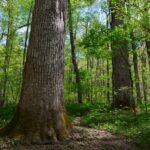
Joyce Kilmer National Park
This small pocket of virgin timber in western North Carolina contains 50 different tree species with tuliptree the most abundant and beautiful. The oldest trees are in the 400 to 500-year range (see photos). The story goes that when the loggers were in this area, the beauty and size of the trees brought tears to their eyes and they refused to cut them. At the Oconaluftee visitors center in the Great Smoky Mountains National Park there are photos of gigantic felled tuliptrees. Awe-inspiring and heart-breaking in the same photo!
Presidents Washington and Jefferson planted tuliptrees at Mt. Vernon and Monticello, respectively, with two trees dating from 1785 extant at Mt. Vernon. Vanderbilt used tuliptree to frame the entrance to the great mansion in Asheville, NC. The trees were planted circa 1892 and replaced in the 21st century.
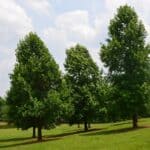
Milliken
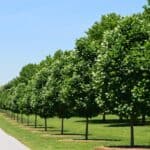
Emerald City Milliken
At Winterthur, in Delaware, there are mammoth tuliptrees near the Museum. At Milliken Corporation, Spartanburg, SC, some thirty years past, large groupings of tuliptree were planted (see photo). Recently, an entrance road to the Milliken headquarters was planted with Emerald City®, a more uniform, dark green foliage selection from Keith Warren and Schmidt Nursery. (see photo) Liriodendron tulipifera and L. chinense are the only 2 species in the genus. Hybrids between the two are known. I have grown the three and prefer the native species.
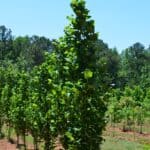
Arnold Malone
Habit is pyramidal in youth, more open with an irregular branching pattern at maturity. Trees reach 70 to 90’ high by 35 to 50’ in width under cultivation. On occasion, I observed trees as wide as tall. Growth is easily 3 to 5’ per year in youth, particularly when sited in moist, well-drained soil. The national champion is 100’ high and 83’ wide in Chesapeake, VA. With a native range from Vermont to Florida, west to Michigan and Texas, there are larger trees waiting to be discovered. In the wild, the species is most abundant in moist rich soils but easily moves into drier sites and fallow fields. In our garden, seedlings pop up with regularity. My wife says no more tuliptrees in the garden while I attempt to rescue all. The battle continues! The species has a measure of shade tolerance for, in woodlands, it survives and eventually “finds” the light. On occasion, trees occur is large groves/masses, effectively excluding competing trees.

University of Connecticut
Foliage is unique and readily identifiable, with 2 to 4 broad basal and 2 terminal lobes. The bright green leaf, 4 to 8” long and as wide, develops yellow to gold autumn colors. Leaves emerge in mid to late March in the Athens area and are among the first to abscise in autumn. The yellow-orange-green flowers are shaped like a tulip, opening with the developing/mature leaves, often from the upper branches, and seldom noticed until the petals litter the ground.
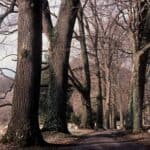
Trunks in Southern Indiana
Honey bees make excellent honey from the flowers. The dry fruits (samaras) are held in cone-like structures that disintegrate over winter. Seed has low viability but is so abundant that there are always baby tuliptrees. The bark is gray-brown, furrowed into close, interlacing, rounded to flattened ridges which are separated by grayish crevices. Winter identification of tuliptree is facilitated by the characteristic bark and the ½” long buds, shaped like a duck’s bill, with two valvate (like a clam shell), greenish to reddish scales. When opening in the spring, a miniature flag-shaped leaf is revealed and unfurls to reveal the typical mature outline. The wood is soft and light weight and is used for furniture, interior finishes, plywood, musical instruments and pulpwood. Indians crafted their canoes from the trunks.
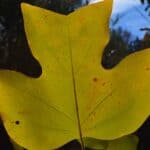
Foliage
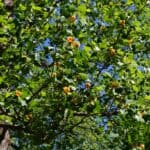
Flowering - Jane Bath
Through the many years of cultivation, selections for variegated foliage (‘Aureomarginatum’, ‘Mediopictum’); columnar habit (‘Arnold’ = ‘Fastigiatum’); small leaf and habit (‘Ardis’, ‘Little Volunteer’); uniform habit, dark green foliage, and increased cold hardiness (Emerald City®) were introduced. For restricted areas, ‘Little Volunteer’ is a perfect fit as the habit and leaves are ¼ to 1/3 the size of the species. The flowers and fruits follow the same pattern. The tree in our garden is my wife’s favorite. Amazing considering her feelings about self-sown species seedlings.

